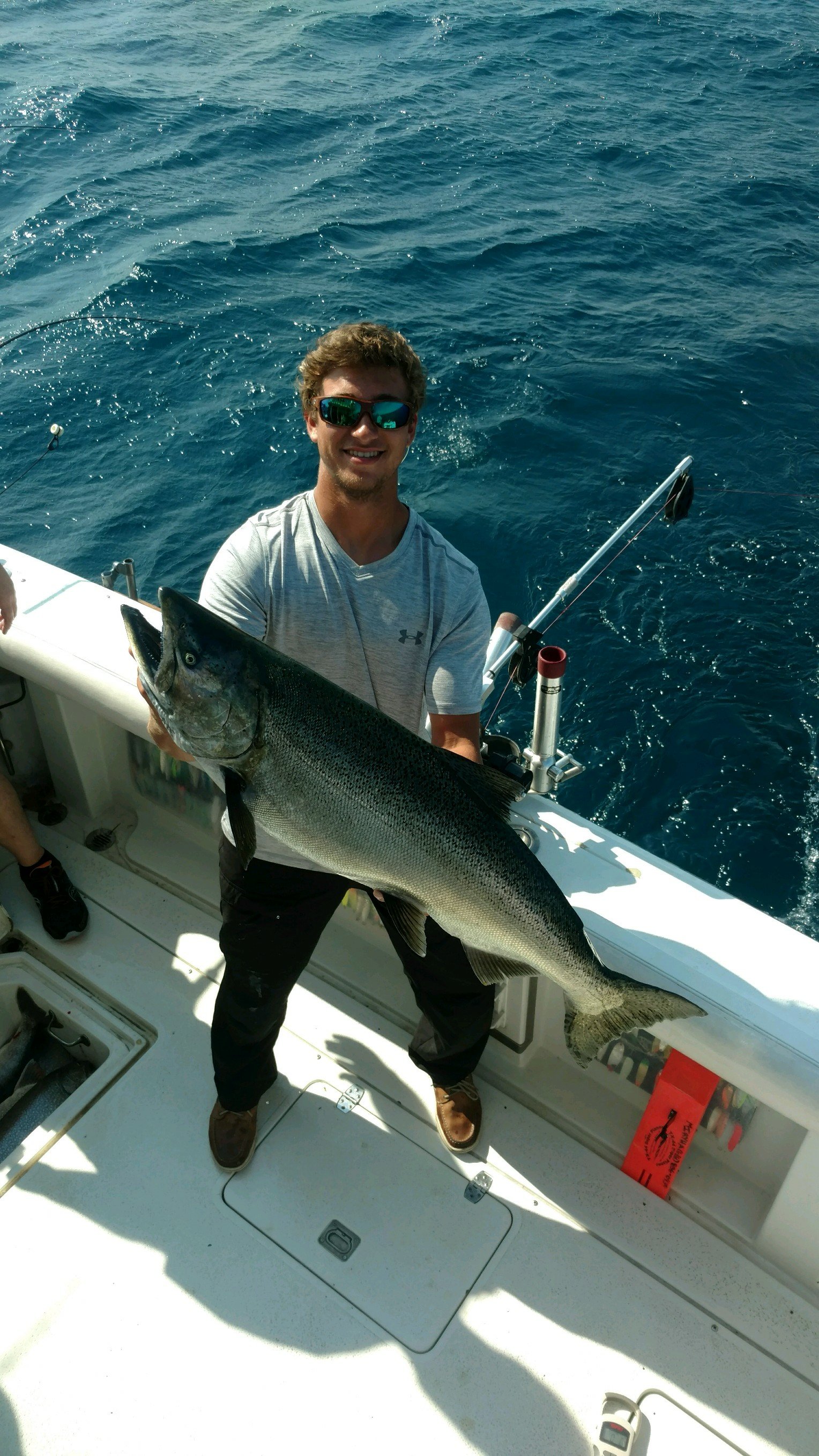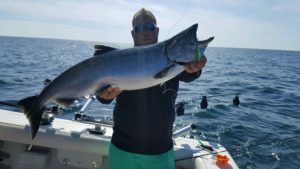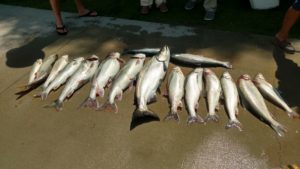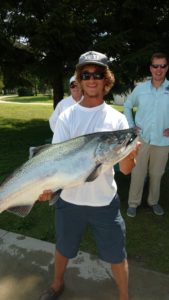Fishing last weekend was great. Managed to find the big trout. Very few King Salmon around. Had three on and landed only one. Steelhead should be here soon. Hope to see you out Charter Fishing in Saugatuck this year. Capt Mike
Excellent fishing the last two weeks. This is the best King fishing we have had in years. Here is a picture of First Mate Chandler with a 22 pound King Salmon.

Wow! Capt Drew and Chandler had a very busy week Catching Lake Trout and Big King (Chinook) Salmon. Boy did they catch em!! I believe they averaged more than 10 fish per Lake Michigan Fishing Adventure out of Saugatuck. More importantly, they caught Big Fish. I remember hearing four or five times about catching 20 + pounders – King Salmon and Lake Trout. Really good job finding and catching some really Big Fish. This week the guys get one day off – and all they want to do is go fishing. Thursday (tomorrow) is an open day. If anyone wants to go and catch some Big Fish, give us a call or send us an email.
Enjoy your Day,
Capt Mike
https://saugatuckcharterfishing.com/

Started off slow but we figured it out. Check out that Handsome picture of our first mate Chandler with a 24 pound King Salmon. The fishing has been excellent. Great fighting Lake Trout today. Finished the day off with a nice mixed bag of fish including a Coho Salmon, Steelhead Trout, Chinook Salmon, and Lake Trout. All we needed today for a Grand Slam of Lake Michigan Sportfishing was a Brown Trout. Maybe we can accomplish that next year with this Great Family group that I have known for years. Thank you for coming out for some great times and excellent line pulling fun with these nice sized fish.

Nice Catch 7-27-16

Biggest King Salmon So Far
Looking for one to three people to share costs this Wednesday for a Sportfishing Charter in the morning (6 am).
I made a mistake and dated my first message as 8-20. How about 7-20-16 – this Wednesday.
Enjoy your Day.
Capt Mike
